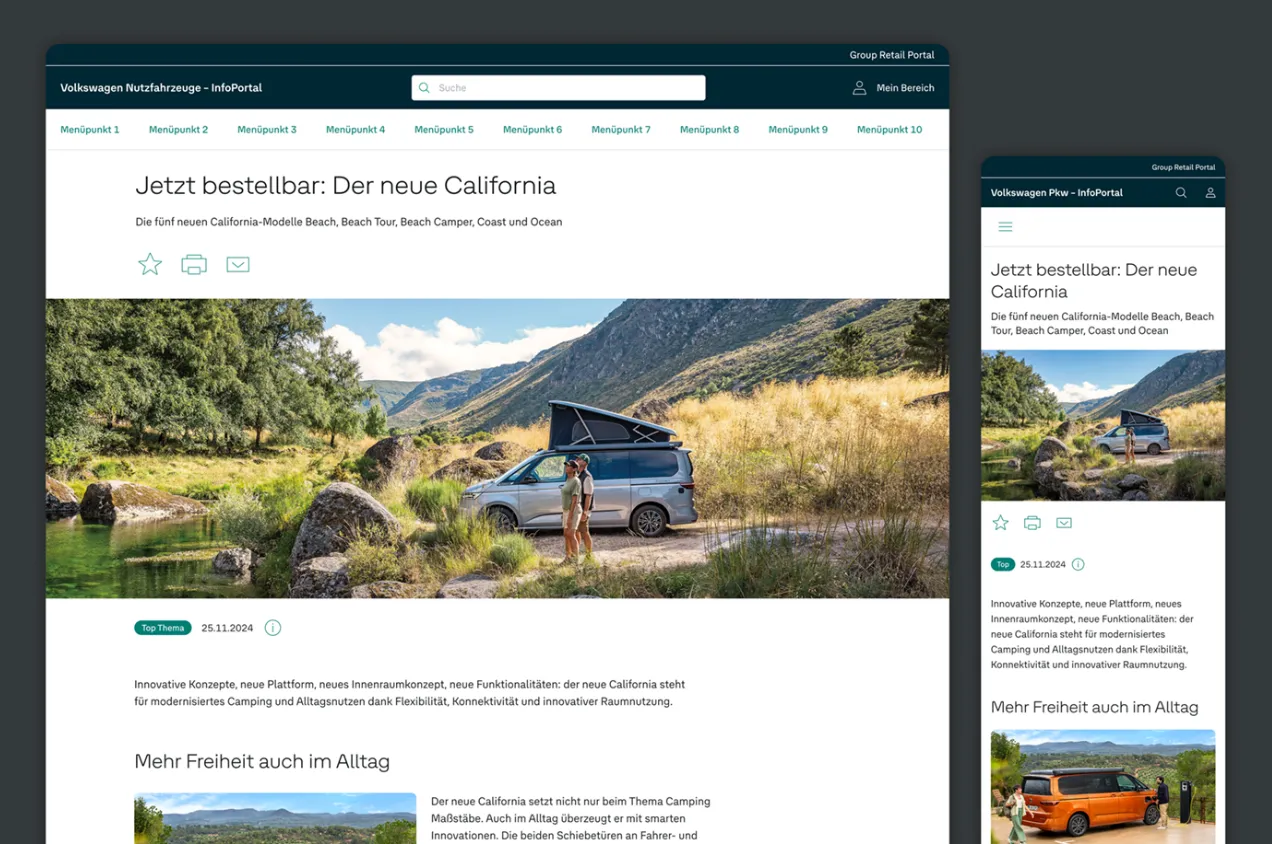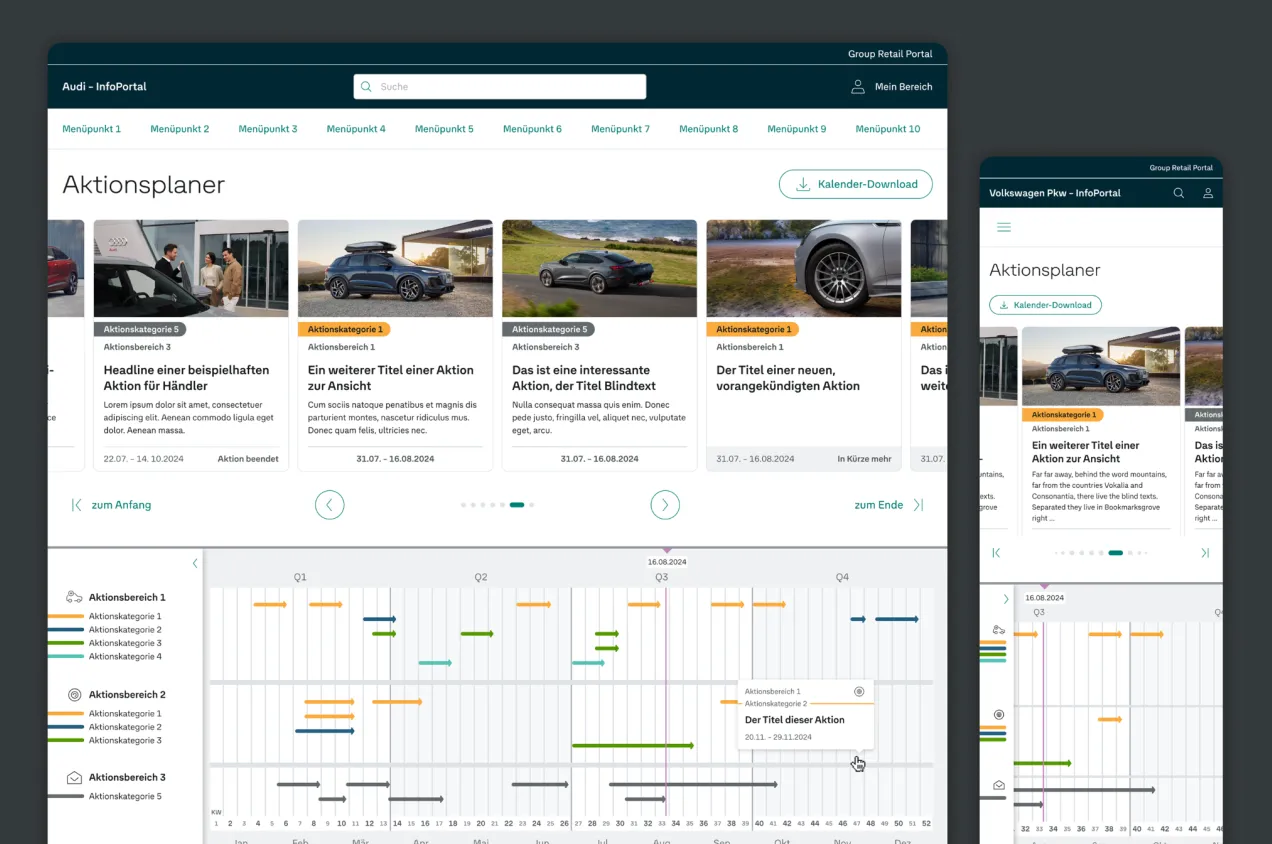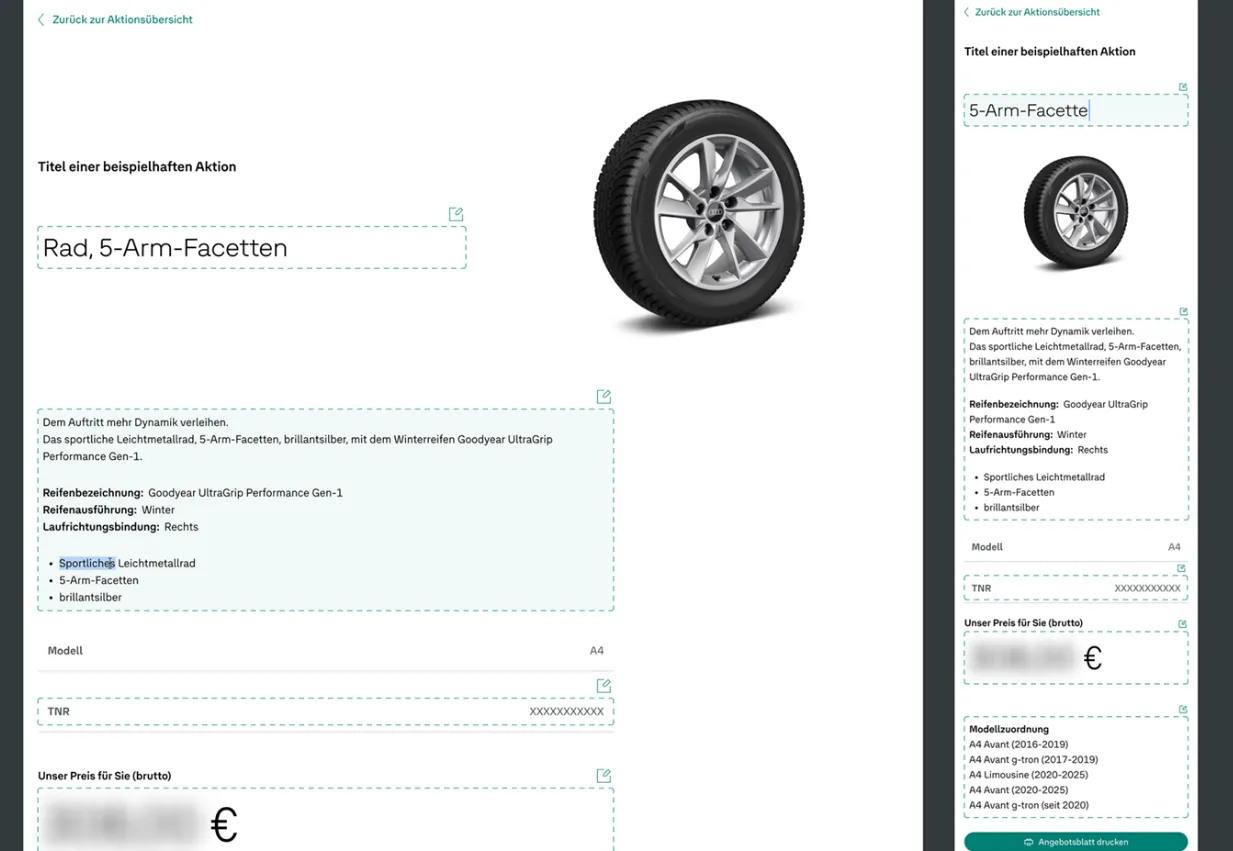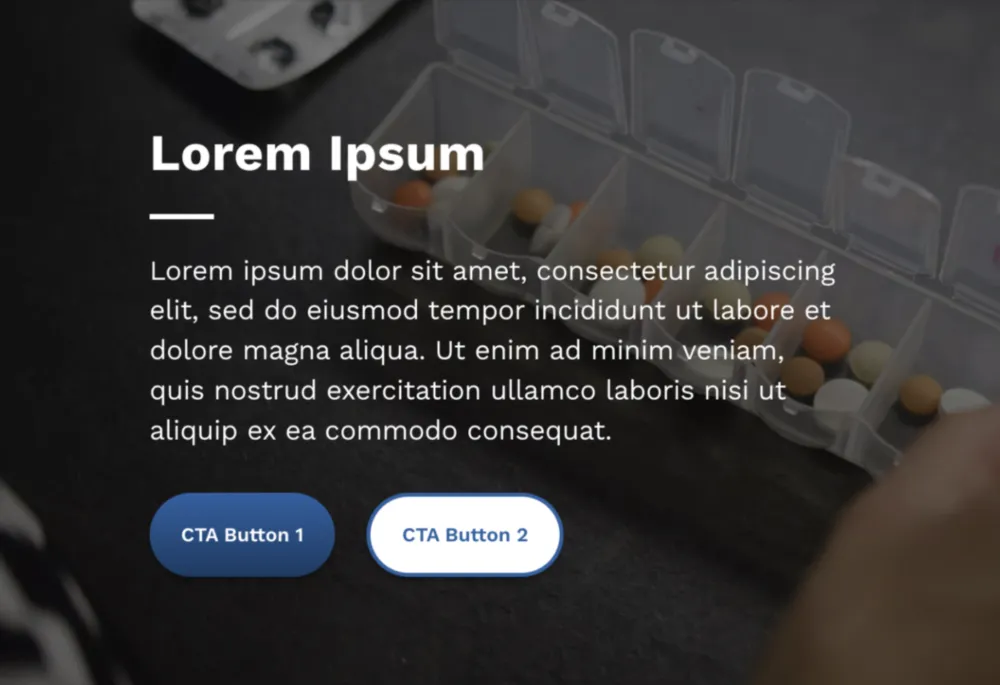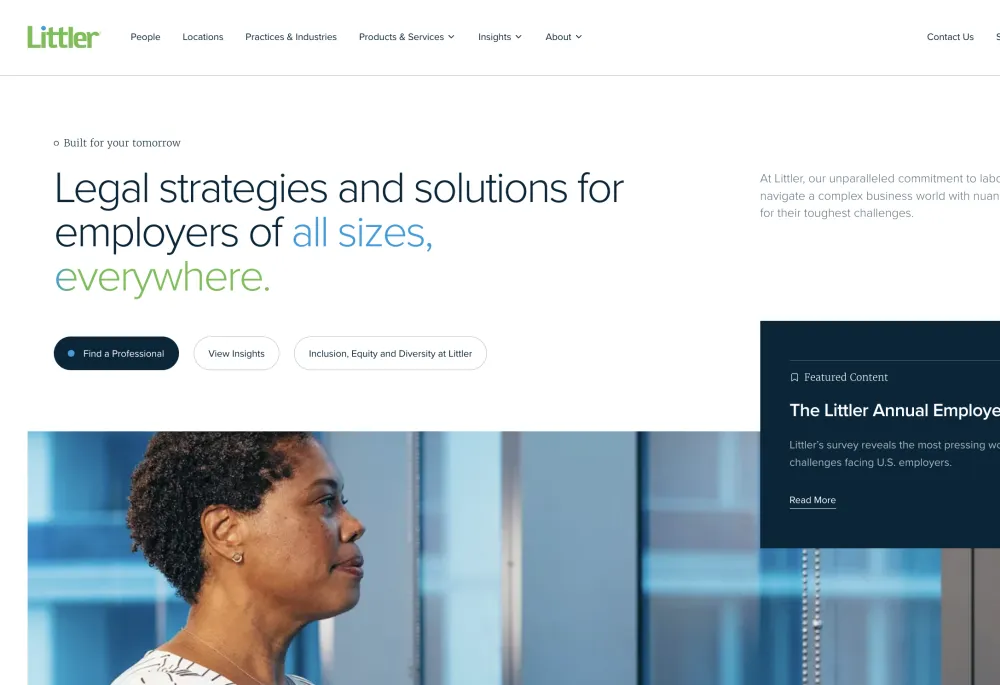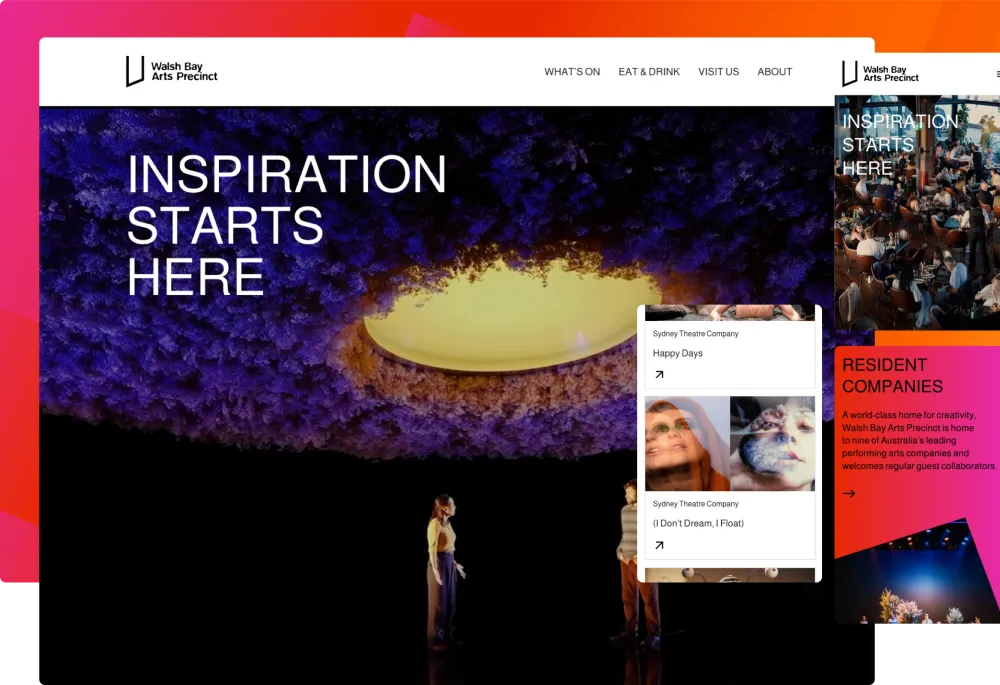Sector(s)
Team Members
Project Team
drunomics team (persons without drupal.org accounts):
- Peter Scheipl (Development & Delivery Manager, drunomics)
- Fedir Ponikarevych (Backend Developer, drunomics)
- Oleh Natalushko (Testing Expert, drunomics)
- Olena Zaiets (UX/UI Designer, drunomics)
Visit the site
Visit the siteOrganizations Involved
Community contributions
As a result of this project, multiple issues were created and resolved, with the contributions given back to the community. The following is a partial list:
Drupal Core
- Media Library performance issue
- Table Sort issue
- Pagination issue
- CKEditor 5 headings
- Migration performance improvement
- Migration messages fix
- Transaction autocommit execution order
- Menu items subtree issue with disabled parents
- PHP 8.1 compatibility issue
- Browser language detection is not cache aware
- False positives when identifying what is a placeholder, for deprecation error
- EntityAutocomplete should pass the original URI to the selection handler
- Uploading a file to media library flushes theme registry
- Transaction autocommit during shutdown relies on unreliable object destruction order
Contribution Modules
- Nuxt-auth-utils contributions: Improved session handling
- Rest Menu Items contributions: 3479928
- Publication Date contributions: 3074373
- Migrate Log UI contributions: 3405477 and 3425744
- Co-Maintainership of AWS Cloud Watchlogs, with several resolved issues.
- OpenID Connect / OAuth Client contributions: 3504763
- Lupus Custom Elements Renderer contributions: 3300235, 3353656, 3227653, 3300235
- Custom Elements contributions: 3347607, 3324583
- Lupus decoupled Drupal contributions: 3367839
The Volkswagen Group IT required a new multi-brand communication and information platform designed to maximize value by seamlessly connecting Volkswagen AG manufacturers with their dealership and service organizations. The project was developed in cooperation with their partner, Porsche Informatik. To ensure a successful implementation, drunomics was invited to join the project team as a recognized Drupal expert. By migrating the brands Volkswagen, Volkswagen Commercial Vehicles and AUDI from existing legacy systems to this new centralized multi-brand solution, it was possible to leverage valuable synergies and streamline cloud operations. The shared editorial backend enables both cross-brand and brand-specific content creation. This new architecture, based on Lupus Decoupled Drupal, Nuxt, OpenSearch and AWS Fargate, enables easy and scalable integration of additional brands in a way that will be easy to maintain and keep up-to-date with new emerging technologies.
General Information
All images are © Volkswagen / AUDI and taken from publicly accessible websites. Texts were also either sourced from public sources or formulated as placeholder texts to avoid publishing internal details.
Goals:
- Enable content distribution across multiple brands.
- Standardize and streamline content management for various brands.
- Reduce operational and development costs.
- Support cloud-based scalability and high availability.
- Provide a modern, user-friendly interface.
- Ensure compliance with the latest industry standards for architecture and security.
- Maintain regulatory compliance with GDPR and company-specific standards.
- Facilitate seamless data migration from legacy systems.
Requirements:
- Develop a multi-brand platform with a user-friendly frontend and a centralized backend.
- Design a modern, responsive frontend user interface that enables dynamic navigation and personalized content.
- Manage content and metadata to support workflows for various content types, such as articles and brochures, including media assets like images and videos for streaming.
- Implement a powerful and efficient search function with synonym search and ranking mechanisms for quick and accurate content discovery.
- Enable role-based access control for secure and efficient user management.
- Integrate APIs and interfaces to connect with internal systems.
- Incorporate and develop additional features and custom tools.
- Ensure GDPR and company regulation compliance by implementing a data retention and deletion policy.
- Deploy on a cloud-based platform to ensure scalability, high availability, and flexibility.
- Integrate a CI/CD pipeline for automated testing, deployment, and seamless updates.
- Adopt DevOps practices to streamline development, enhance collaboration, and improve system reliability.
- Migrate and transform exported content per brand.
- Ensure high performance and scalability through intensive load testing.
Outcome
The project delivers a scalable, cloud-based multi-brand platform with a centralized backend and decoupled user-friendly interface for Volkswagen, Volkswagen Commercial Vehicles and AUDI. Standardized content management and optimized workflow reduces costs, while advanced search functionality enhances usability and improves user experience by ensuring quick access to relevant information. Additional features, such as customized Newsletters, Sales Promotion Manager, a Promotion Combination Matrix, Goodwill tool for car purchase and self-created web forms enhance functionality, providing added value for all brands. With Lupus Decoupled Drupal, the backend and frontend were developed independently, enabling parallel work, greater efficiency, and seamless collaboration. Together with Volkswagen, we designed a custom serverless architecture using AWS Fargate, ensuring high availability, scalability and security through a joint DevOps and CI/CD approach. Rigorous performance testing, validated by impressive metrics - with simultaneous load from 500 working editorial users and 5000 frontend users - confirmed the system’s reliability and efficiency. GDPR compliance and robust access control safeguard data and seamless migration of legacy content, incorporating lessons learned from past migrations, ensures an efficient transition of future brand migrations.
Back to topTimeline and Major Milestones
The project adopted an agile, Scrum-based approach to ensure iterative development, continuous feedback, and adaptability to changing requirements. The following major milestones were successfully achieved:
Technical & Architectural Setup
- Establish a cloud-based infrastructure with a CI/CD pipeline and DevOps integration for automated deployment and scalability.
- Design and implement a custom video streaming solution on AWS Media Service with automated media conversion in collaboration with the customer's Cloud Integration & Delivery team.
Backend & Multi-Brand Platform Development
- Implement a centralized backend for editors with multi-brand content support for a decoupled user frontend.
- Integrate the customer's central login system to allow editors access to the backend, and the Volkswagen Portal to provide frontend access for retail dealers.
- Develop of a fine-grained, role-based access control system integrated with the existing dealer structure, as a core feature for secure and highly customized user access management.
- Develop workflows for content management, including metadata, articles, brochures, images and videos.
Frontend & Content Management Implementation
- Create a modern, responsive UI with dynamic navigation and personalized content.
- Support of user login and fine grained access including frontend users and backend editors.
- Implement a caching layer for optimized performance and scalability, support for various content types.
- Develop integrated customer specific calculation-tools.
- Implement advanced search with synonym recognition and ranking mechanisms.
Data Migration & Compliance Implementation
- Structure brand-specific content and perform multiple data migrations from legacy platforms, including users, articles, booklets, section pages, promotions, taxonomy data, embedded media (images, documents, streaming videos, form links), and more ensuring full functionality and complete, quality-assured data transfer to the new platform.
- Ensure GDPR compliance with a structured data retention and deletion policy.
Feature Integration & Enhancements
- Integrate and customize highly flexible newsletters that are sent daily within a two-hour time window to more than 80,000 recipients.
- Develop a Sales Promotion Manager for AUDI to manage sales promotions, campaigns and related product sheets, allowing users to adjust prices, customize product information and generate PDFs, and oversee promotions with a Gantt chart, with product management in the backend.
- Develop a Promotion Combination Matrix Tool that allows users to configure various discount opportunities and dynamically validate whether they can be combined, where promotions and discount combinations can be configured and managed in the backend.
- Integrated and simplify custom web forms with custom validation, article management and access control.
- Develop a Goodwill-Tool for VW car purchases.
Testing, Optimization & Security Compliance
- Conduct performance and security testing by external experts to validate the platform’s robustness and scalability.
- Support and accompany these efforts by ensuring technical readiness, and implementing follow-up improvements based on the results.
- Finalize compliance with industry standards and company-specific regulations.
Rollout & Go-Live
- Roll out to the platform in a controlled release process, supported by a CI/CD pipeline that enables automated quality assurance and deployment routines.
- Support a multi-stage release process that integrates automated deployment routines with structured manual validation steps before final release.
- Train users and onboard stakeholders for a smooth transition.
What Makes This Project Special
This project stands out due to its unique multi-brand architecture, allowing different brands to operate independently while sharing a centralized backend. Further, the setup ensures that content can be efficiently distributed by editors across multiple brands and tailored to specific target groups without interfering with each other. Despite the centralized backend and feature set, the system remains highly adaptable and scales effortlessly with increasing users, traffic, and new brands joining the platform. The cloud infrastructure also enables seamless integration of new features, ensuring that all brands benefit from continuous improvements. With modern DevOps practices and a CI/CD pipeline in place, the platform guarantees high availability, automated updates, and future-proof scalability. This combination of flexibility, efficiency, and technological innovation makes the project a strategic milestone, providing a scalable, secure, and future-ready communication platform for evolving business needs.
Back to topProject Management Approach
The project was developed using the agile Scrum methodology. drunomics took on key roles including Delivery Manager, Project Manager, Design and UX/UI experts, and provided software development support.
A Jira project was created and customized so that each team had their own views and statuses. The Jira workflow was continuously refined throughout the project as part of the retrospective meeting results.
Content managers took responsibility for specific epics. In collaboration with the Product Owner, systematic acceptance and testing of user stories was conducted.
A comprehensive documentation and tracking system ensured transparency and traceability throughout the entire development process. Identified defects were systematically recorded and prioritized – critical issues were resolved within the current sprint, while less urgent adjustments were scheduled by the Product Owner for subsequent sprints.
Back to topBusiness Problems Solved
This project addresses several key business challenges
- Consolidating three separate legacy systems into a single multi-brand platform.
- Reducing operational complexity and maintenance efforts by centralizing content management and streamlining editorial workflows.
- Eliminating the need for multiple infrastructures and redundant development efforts.
- Maintaining brand-specific content within a centralized system.
- Ensuring high availability and performance.
- Enforcing GDPR compliance and strong security measures, mitigating risks associated with outdated systems and data management.
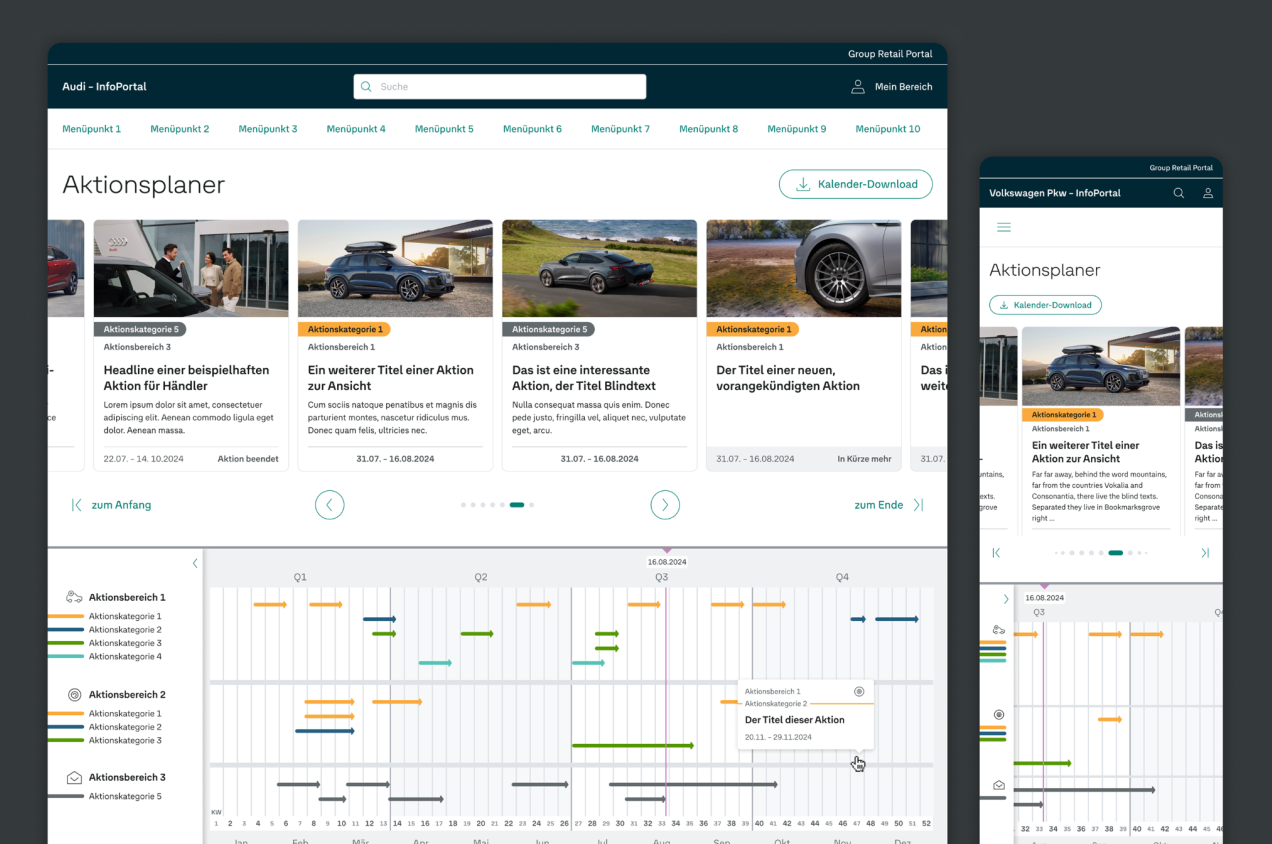
Results Achieved
Not only were Porsche Informatik and drunomics able to resolve the business requirements listed above, but the project drove technical innovation. More detail is given in the “Why These Modules Were Chosen” section.
The content creators, including editors from the sales and service departments, successfully transitioned to the new system. Overall, the feedback was positive, with smooth launches and only the expected minor hiccups. The platform has proven to be reliable — newsletters are being sent seamlessly, fine-grained content visibility is supported, and key business challenges have been addressed.
Most importantly, a strong foundation has been established, enabling AUDI and VW to enhance their InfoPortal with new features in the years ahead.
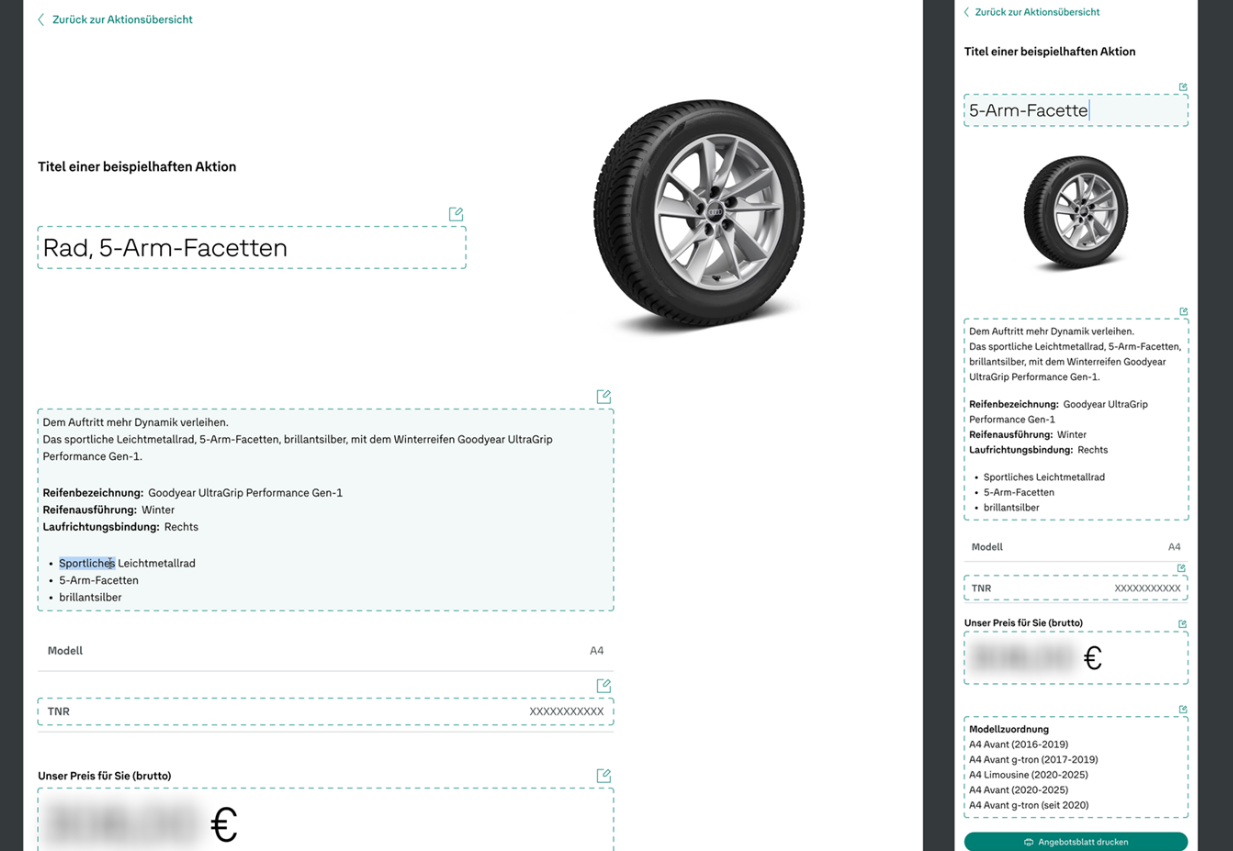
Development Effort and Resource Involvement
Based on the extensive project scope, the complexity of cross-brand coordination and requirement management, and the technical depth required for enterprise-grade software integration, the implementation demanded a multi-year development effort.
The project was executed in three-week sprint formats and involved a cross-functional team. The development was driven by an average core team of 10 people, complemented by approximately 10 stakeholders and contributors on the customer side, including brand-specific experts and representatives from the central IT organization.
Work distribution
- Architecture & Infrastructure: Establishing a secure and scalable cloud setup capable of serving multiple brands with high availability was a continuous effort from the project start. The infrastructure evolved throughout the entire project, adapting to further requirements.
- Backend & Editorial Workflows: Implementing flexible, role-based content management to brand-specific needs required substantial effort, particularly in requirements engineering and coordination on the customer side, where aligning harmonized requirements across brands proved especially demanding.
- Frontend Development: Building decoupled frontends, with custom access-management handling, required considerable effort due to the need of technical interface integration, the usage of customer’s architectural frontend framework and the alignment with brand-specific UX/UI design standards.
- Data Migration: Executing a phased migration from legacy systems, including complex content structures, media assets, and metadata transformations was one of the most critical and resource-intensive parts of the project. Toward the end, the final data migration became a key focus, requiring extensive quality checks and multiple test runs to ensure complete and accurate data transfer.
- Feature Development: Integrating functionalities such as promotion tools, newsletters, and dynamic form systems, introduced additional complexity due to the need for individual customization. These features were tailored to meet brand-specific business requirements and required close collaboration between development teams and stakeholders to ensure functionality and compliance across brands.
- DevOps & Testing: DevOps setup had to be established from the ground up, both at the infrastructure and organizational levels, which required significant time and coordination in preparation for key launch milestones. Automated testing was implemented early in the project, while an external QA team handled extensive customer-side validation, representing a substantial parallel effort to ensure quality, stability, and compliance.
Challenges
The greatest challenge throughout the project was to refine stories such that acceptance criteria of a story and feature set could be adequately tested by the independent quality assurance team, and then accepted by the stakeholders and the product owner. Well-defined feature requirements were key to a successful product.
There were a number of technical challenges as well. The custom workflows for content creators required detailed article workflows. A fine-grained permission system, integrating with 2 external SSO systems, required extensive development and testing. Individual articles were either accessible or denied, based on client-specific rules covering varying dealership roles, regions, and customly managed access control lists.
Custom content types were created to support more complex features such as brochures and combi-matrices as well as sales promotions. Data for these content types were imported from three legacy systems, each with their own unique data structure. Additionally, there were technical requirements that the front-end be responsive, the content delivery be within a set number of milliseconds, and the media files be virus scanned before being saved in the system and accessible. In order to obtain approval, the system also had to undergo multiple stress and penetration tests.
Back to topSummary
This project replaces three legacy systems used by separate companies into a single scalable, cloud-based multi-brand platform, reducing costs and operational complexity. A centralized backend with a decloupled frontend enables efficient, brand-specific content distribution. With DevOps, CI/CD, and GDPR compliance, the platform ensures high availability, security, and support for the adoption of additional features.
Back to topTo build a scalable, multi-brand, cloud-based communication and information platform, a CMS was required that could support standardized content structures and workflows while remaining flexible and customizable. Drupal proved to be the ideal solution due to its:
- Proven Content Management & Customization - A mature and reliable CMS with robust functionality, allowing for easy adaptation and customization to meet customer requirements.
- Open-Source & Cost Efficiency - No vendor lock-in or licensing fees, ensuring full ownership and freedom for future development.
- Scalable, Cloud-Ready Architecture - Designed to operate seamlessly in cloud environments, supporting performance and scalability as the platform grows.
This combination provided a solid, efficient and future-proof communication platform that could
remain adaptable according to customer needs.
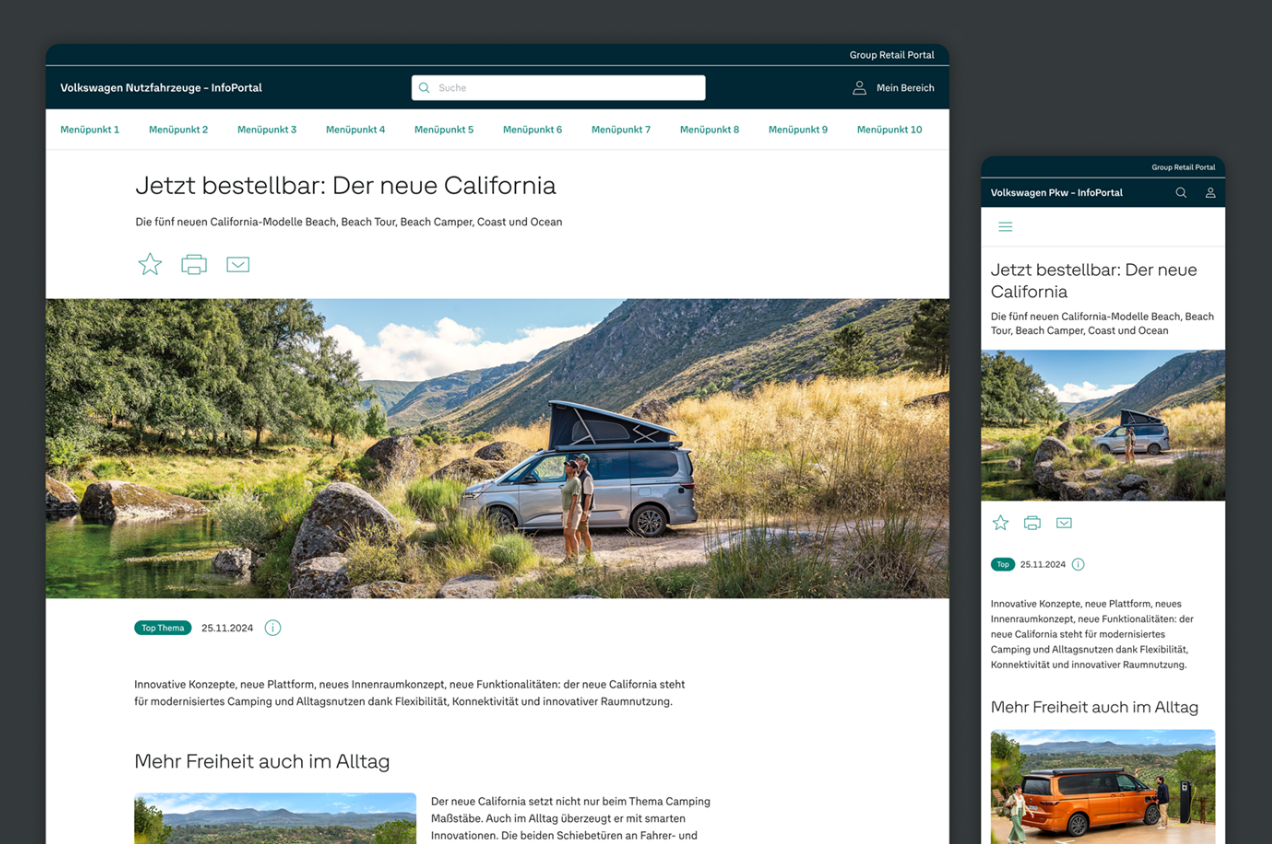
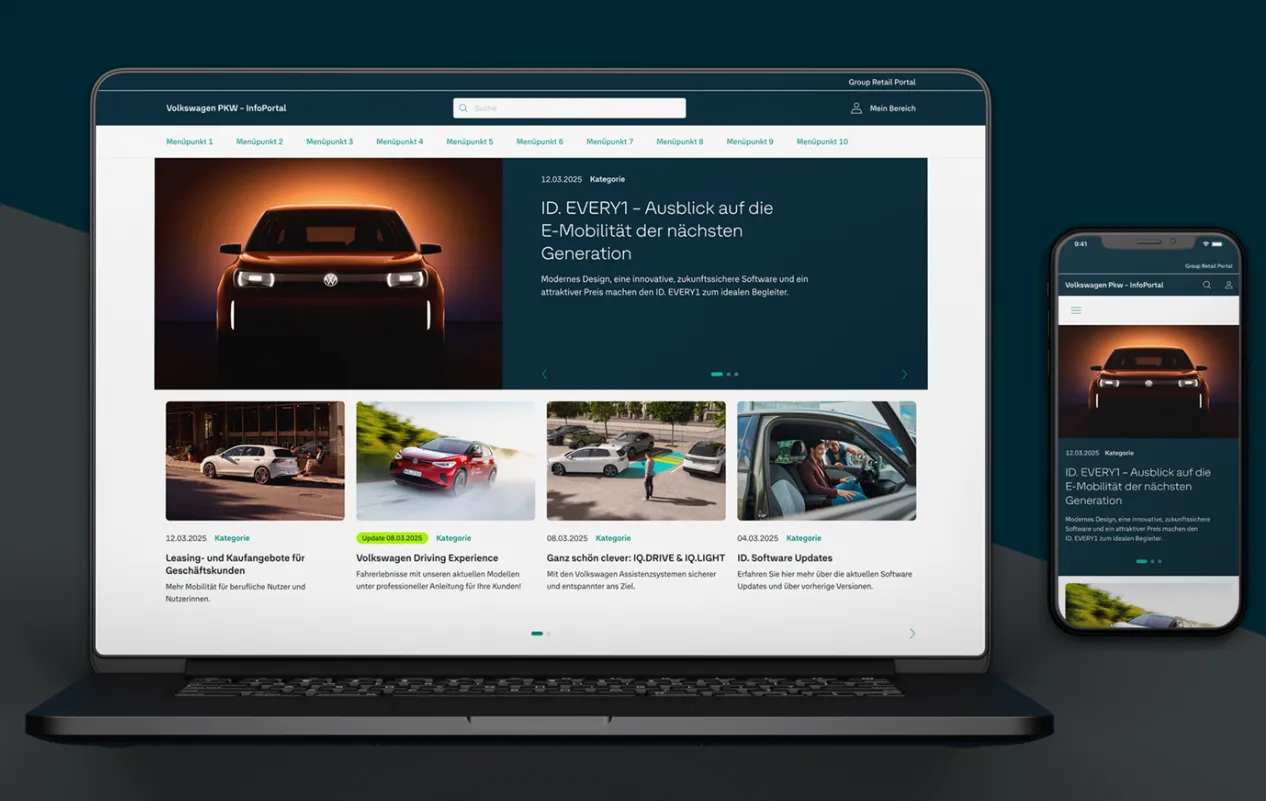
Technical Specifications
Drupal version:
Key modules/theme/distribution used:
- Custom Elements
- Lupus Decoupled Drupal
- Lupus Custom Elements Renderer
- Webform
- CKEditor 5
- Linkit
- Insert
- Content moderation
- Access unpublished
- Scheduler
- Scheduler content moderation integration
- Entity Usage
- Entity Clone
- Simplenews
- Search API
- Redis
- S3 File System
- Simple OAuth (OAuth2) & OpenID Connect
- Config Filter
- Config Ignore
- Configuration Split
- Monitoring
- ClamAV
Most of the modules were required for exactly the use-case that they fulfill, e.g. Redis Cache being used to improve the speed of the site, S3 File Systems being used to push media files to S3 buckets.
In addition to basic usage, the webforms module is heavily used by the Chief Editor role to create individualized, custom forms for specific audiences and for specific products.
The Scheduler and Scheduler content moderation integration modules are used to publish all content based on workflow state and at specific times. The Chief Editor approves content for publication, and it is scheduled to be published.
The access unpublished module was customized for brochures, such that generating the accessed unpublished token for the brochure would work for all brochure pages which are independent articles or exclusive sub-pages.
The project started using CKEditor 4 and upgraded to CKEditor 5 before the launch date. To align with the new CKEditor 5 UX patterns, all custom plugins were successfully rewritten to support the new editor version. The CKEditor is used for several text area (fields) within the project, in order to display specific elements in a highly customized fashion, with custom highlighting, custom background color schemes, in addition to the common HTML tags, such as H-Tags and lists, per-bundle media display.
Simplenews became a central part of this project, as approximately 100,000 individualized newsletters are to be sent daily to the dealers. All newsletters must be sent once daily, with a warning triggered if there are still elements remaining in the queue. Therefore, the module must not only be reliable, but also work quickly.
